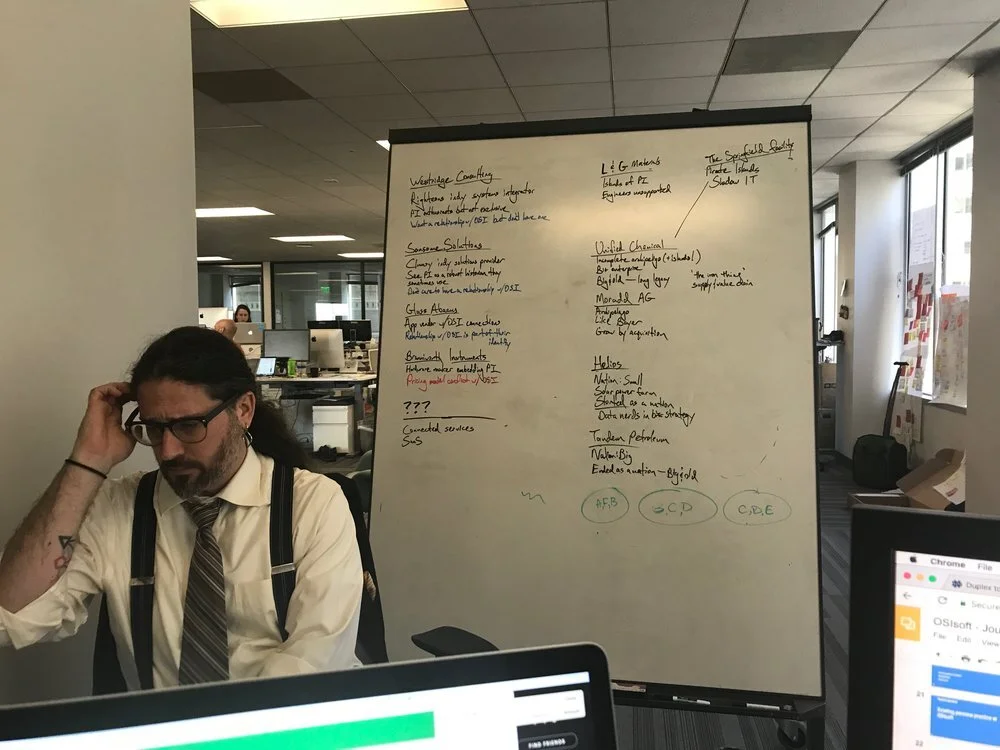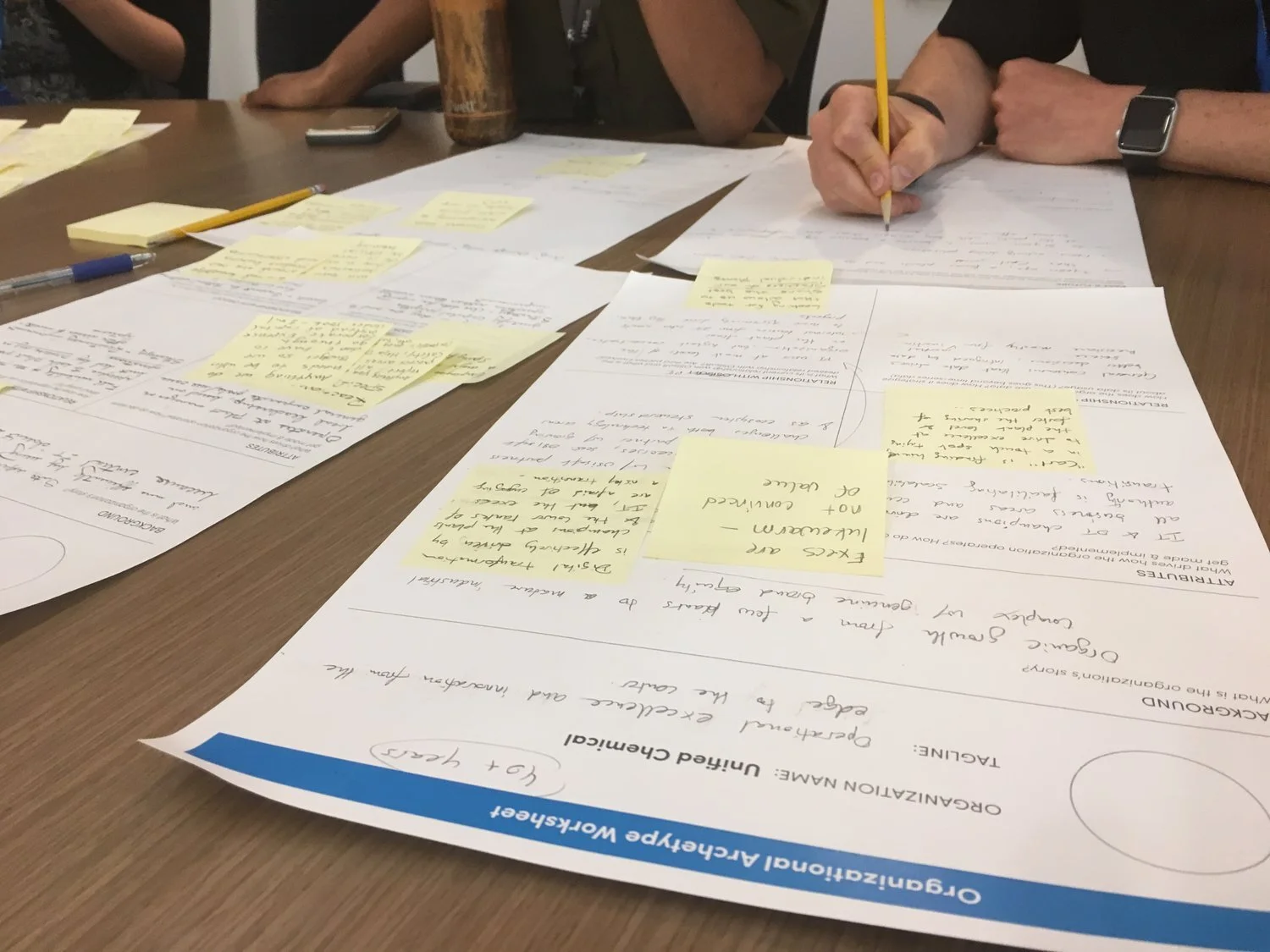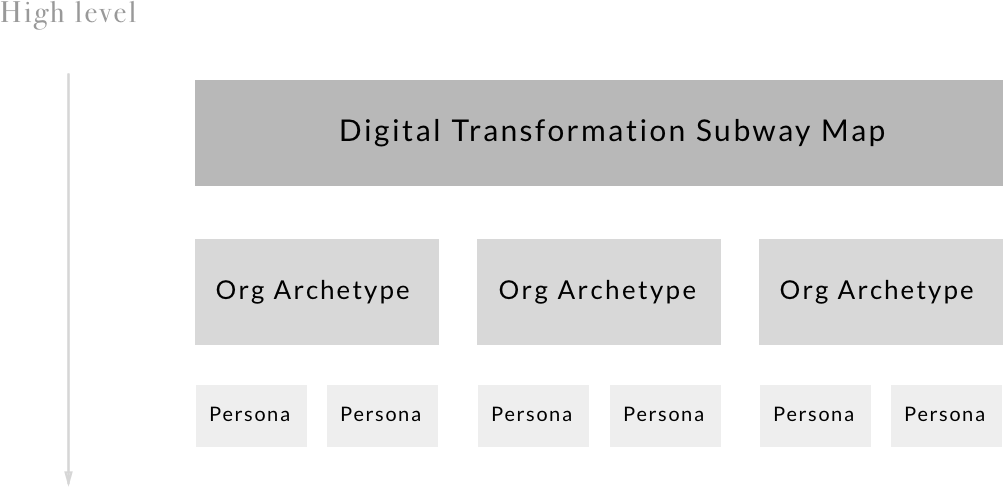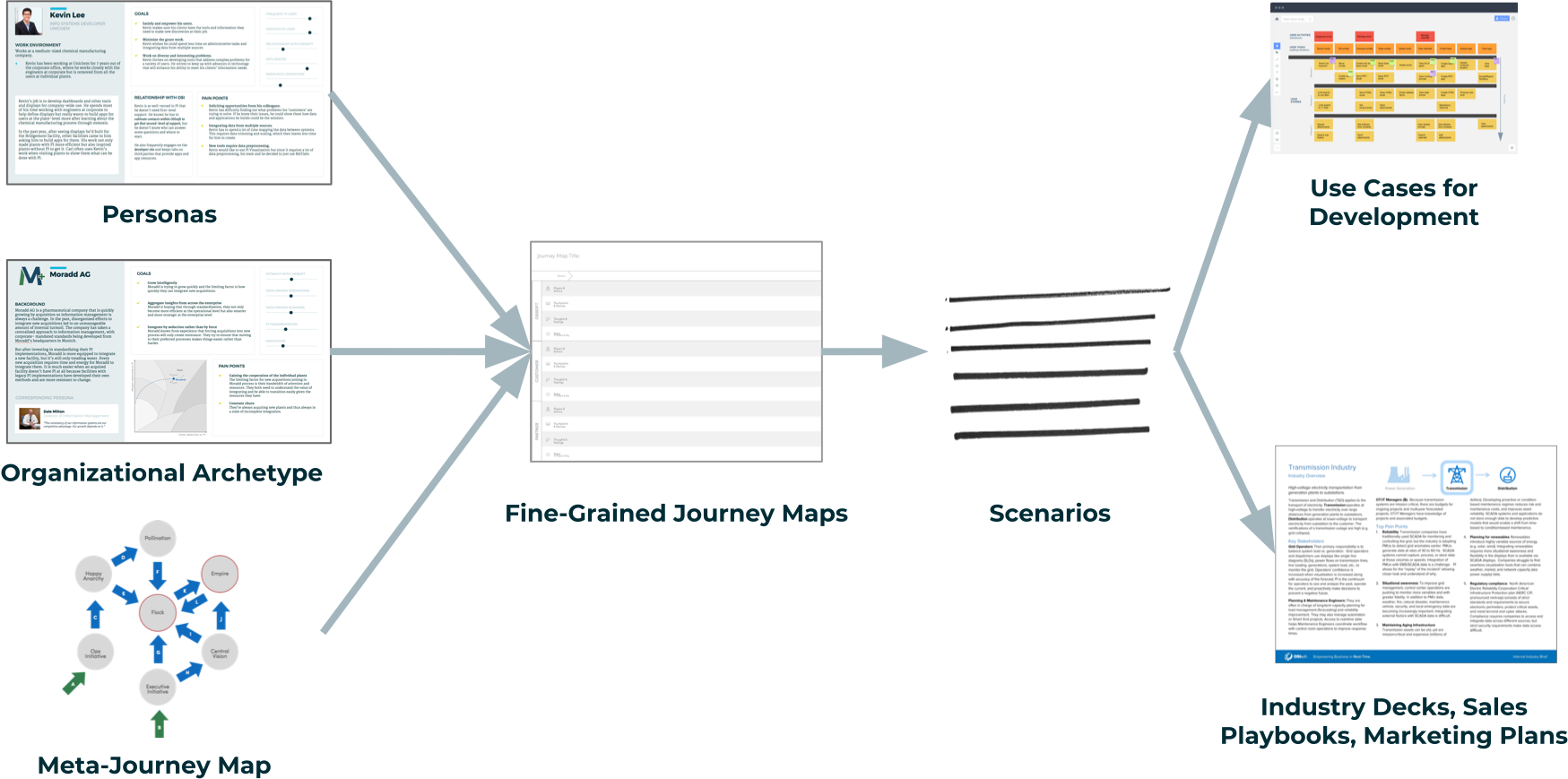Defining Holistic CX Strategy at a Data Infrastructure Organization
The Company
OSIsoft is one of the world’s leading manufacturers of application software for real-time data management. Their product, the PI system, is used by organizations all over the world, across every industry.
The Problem Space
OSIsoft is not able to deliver a holistic experience across its business and its product. Their inability to do so is preventing their customers from going through a Digital Transformation.
The Project
A 2-month project to articulate the customer journey more holistically, and identify a strategy and a roadmap toward a future in which customers have a clear and consistent relationship with the organization. Our project would:
Explore the customer space, to understand the role of real-time data and relationship with OSIsoft in customer’s maturation.
Lay the foundation for OSIsoft’s own organizational transformation and ensure its ability to act on the customer insights we delivered.
My Role
I was part of a 2-person team that did all of the research, strategy, and client management.
My Process
Research Findings: Complexity in the Customer Space
1. Many different types of individual customers
OSIsoft engaged with customers at many levels, from a field operator to a CEO, thus our personas had to cover users, influencers, and buyers.
2. Individuals act their within the context of their organization
The Customer as an Individual is distinct but influenced by the Customer as an organization.
3. An organization’s needs change based on the locus of its data infrastructure power (IT or Ops).
An organization’s locus of data infrastructure / PI is a reflection of its goals. Is PI/data engagement led by Operations as a process improvement tool? Is PI/data engagement led by IT and executives as an integration, standardization, or strategic tool?
4. An organization’s journey through Digital Transformation causes the relationship between IT and Ops to change over time.
Organizations oscillate between cycles of standardization and process improvement in their journey of Digital Transformation and growth. This path affects their engagement with data, PI, and OSIsoft.
A-Ha Moment!
To capture the holistic customer experience, we needed to deliver customer insights as individual Personas in the context of Organizational Archetypes, in a larger Digital Transformation Journey Map
Personas
Persona Synthesis
Using a Persona Worksheet I created during our Synthesis process, we were able to determine that personas were differentiated based on:
Frequency of PI use
Innovative use of PI
Personal relationship with OSIsoft
Influence within their own organization
Resource Limitations
Using this, we were able to create 7 different personas.




Organizational Archetypes
Organizational Archetype Synthesis
By using the Organizational Archetype Worksheet I created, we were able to see key patterns amongst customer organizations regarding:
Industry
Size
Business needs being driven by data
Organizational needs being driven by data
Fragmentation of PI implementation
Level of innovation
Intimacy with OSIsoft
With this exercise, we were able to come up with Organizational Archetypes that depict an organization's goals, pain points, and corresponding personas.



Creating a Meta Journey Map
1. Charted Organizational Archetypes
Research Finding
A Customer Organization's needs change based on its Digital Transformation journey and the evolving locus of data infrastructure power between Ops and IT.
Implication
We plotted our organization archetypes on the Margins (Ops) vs. Center (IT/Executive) locus of PI/data infrastructure axis, charting three key elements:
Current location of relationship with PI/data infrastructure
Origin of relationship with PI/data infrastructure
Future trajectories
1. Identify Boundaries of Org Zones and Digital Transformation
Insight
Mapping the organization’s trajectories revealed 7 zones that organizations can operate within.
Insight
Digital Transformation occurs as organizations move through the zones.
A New Kind of Journey Map: The Digital Transformation Subway Map
There was no linear journey through Digital Transformation, organizations can take multiple paths, so a classic journey map would not suffice
Start Points
Ops Initiative - Someone like a plant manager is bringing data infrastructure in for process imporovement
Executive Initiative - An executive seeks to use data for management intelligence.
Two Stable End States
Flock - An organization's main focus is still optimizing for efficient operational practices throughout the organization through balanced IT and Ops power.
Empire - An organization's main value of data infrastructure is for larger strategic decisions rather than operational optimization. Standardization and IT consolidation reigns supreme.
The Value of a Tool Set
We positioned Organizational Archetypes within the Digital Transformation Map, and personas as employees of those organization. This full story help create successful holistic customer experience solutions because now it is easy to consider:
Where the customer organization is
Where it is trying to go
Who to empower within the organization
Helping OSIsoft Make These Tools Actionable
During our handoff meetings with Sales, Customer Success, Design and Engineering, we worked with them on how they might be able to use these tools to create solutions.
Key Takeaways
1. Design Research techniques can be used to think about business and organizational strategy, not just product design.
2. New problems require new tools - in this case, we created a Digital Transformation Subway Map rather than a linear journey map.
3. It is important to create alignment around new design tools so others can take them forward.












